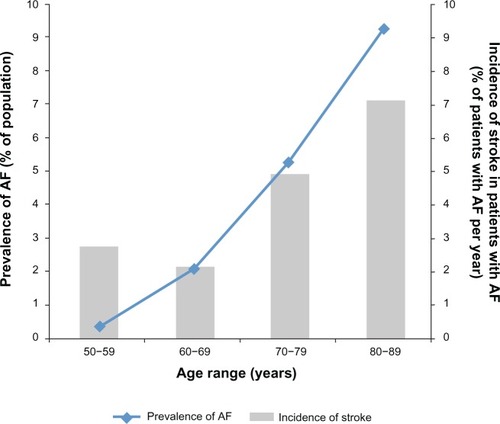Figures & data
Figure 1 Impact of atrial fibrillation (AF) by increasing age: overall prevalence of AF and annual incidence of stroke in patients with AF.

Figure 2 Rates of anticoagulation by patient age group.

Table 1 Summary of drug–drug interactions for warfarin and the novel oral anticoagulants dabigatran, rivaroxaban, and apixaban
Table 2 Summary of study results for RE-LY, ROCKET-AF, ARISTOTLE, and AVERROES, for stroke and systemic embolism rates, major bleeding rates, and all-cause mortality